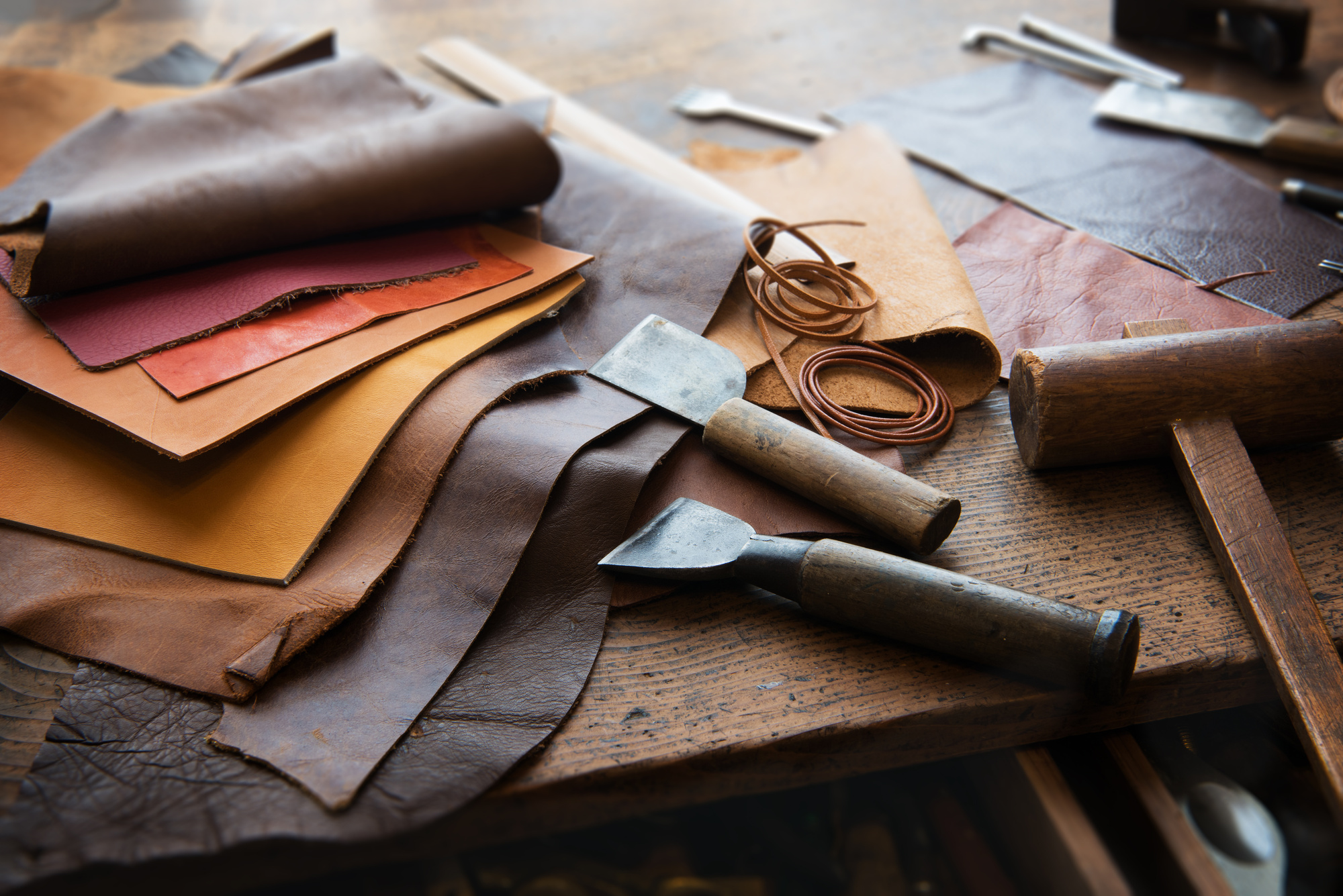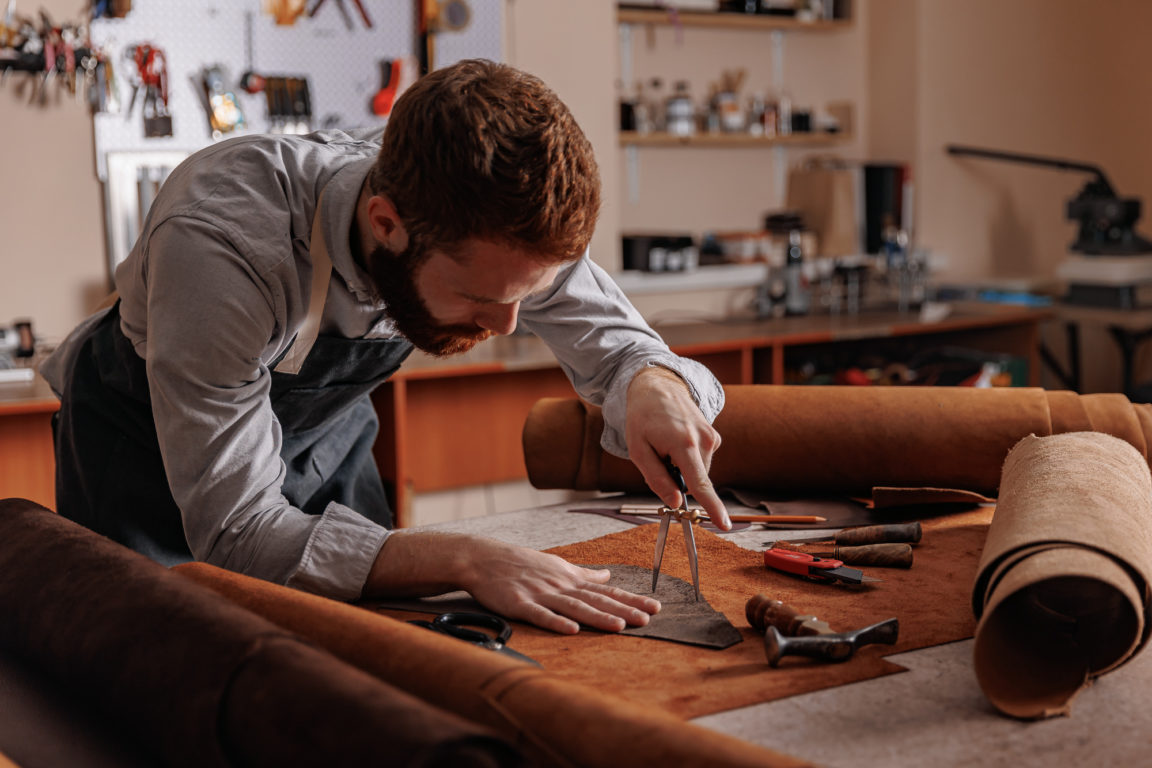Everyone should have at least one hobby. It could be an activity that eases your mind and makes you happy, no matter the result. Sometimes, when you’re good at something, you can turn your hobby into another source of income. One fantastic example is leatherworking.
Leather craft is a lucrative activity that tests your creativity to produce practical items. However, some steps, like cutting the material, may throw off a beginner like you. Unlike other fabrics, leather is tougher. When cutting leather, your regular pair of scissors might break or produce jagged lines.
So, if you’re considering leatherwork as a hobby, you must know how to cut leather correctly. Keep reading to learn the basics of this ancient craft using modern tools.
Cutting Thicker Leather
Products like belts and some bags incorporate thick leather in their designs. For the first-time leatherworker, cutting through thicker materials can be intimidating. But contrary to popular belief, it’s easier to cut than thin leather.
What you’ll need in your kit is a sharp utility knife and a sturdy ruler or, better yet, a steel straight edge. As recommended by Maun, when cutting through thicker leather, you should use a steel straight edge to mark and keep the leather in place while cutting it with a utility knife. Drag it along the line firmly but gently, and take your time as you cut. You may need two to four passes with the knife to cut through it.
A pair of wire-cutting pliers can also do the trick when you don’t have a utility knife that’s sharp enough. They can snip through the thickest leather with ease. If you’re searching for the best wire-cutting pliers for cutting leather, check this reference: bluehomediy.com.

Cutting Thin Leather
Any piece of leather with a thickness of 1 mm or less is considered thin. Working with thinner leather sounds uncomplicated, but it’s tricky in its own right. You could risk creasing the material with your cutting tool if you’re not careful. The result could be a low-quality product that may not meet your standards.
To prevent creases and ensure a clean cut, use a rotary cutter. Applying pressure on the leather with a rolling blade is more manageable after all. You’ll also finish cutting leather sections in less than one pass instead of making several passes with a utility knife. Remember to stabilize the leather with a steel straight edge to get a straight line as you cut.
Like working with thick leather, lay your thin leather grain-side up before you cut it. You could use a heavy paperweight or mini anvil to ensure your leather stays put. Then place your rotary cutter perpendicular to your steel straight edge or ruler. Avoid cutting with the blade at an angle since the end product may require sanding the cut sections’ edges.
Use Cutting Stencils And Guides
Leatherwork requires cutting more than just straight lines. If you plan to make shoes or coin purses, you’ll eventually cut curved sections from the leather.
Most leatherworkers sketch their guides on the leather with a basic pen or pencil. But you can make a stencil using cardboard if you prefer not to draw or cut directly on the material without a guide. Others use advanced tools like wing dividers, overstitch wheels, or stipplers.
Aside from professional tools, you may use everyday items like coins or steel washers to create curve patterns. Leatherwork is an art, and in art, sometimes you need to think outside the box.

Additional Tools You May Need
It’s already a given that you need utility knives, rotary cutters, and rulers for cutting leather. But a fully stocked tool kit with additional items will make your job much easier. Here are some valuable tools you can add to your arsenal:
- Craft knife
- Manual punch
- Swivel knife
- Leather shears
- Awl haft
- Rubber mallet
- Cut-resistant gloves
Each item does a specific task. So, if you want to make your hobby less complicated, consider collecting these tools. You don’t need to have everything right now, especially if you’re still a beginner at the craft. But if there’s one tool you must have other than cutters, it’s a cutting mat.
No matter how flat or durable your work surface is, you need a cutting mat to protect your table or floor. Pick a heavy-duty one that can withstand gashes and self-heal, including those made from PVC. You can avoid grazing through other flat surfaces while getting clean cuts on your leather.
More Tips To Help You
Cutting leather requires a steady grip. When cutting, avoid angling your knife. Keep it perpendicular to the fabric, and use your thumb to guide your blade. A nice, straight edge will be easier to finish afterward in the beveling and burnishing process.
Additionally, always keep your knives and cutting tools sharp. A blunt blade will only create jagged cuts and many creases on the leather. It’ll also be more challenging to cut thin strips with it. To keep it constantly sharp, whet your blade with a diamond plate a few times a week and right before cutting your leather.
Lastly, turn the leather around instead of your hand if you have to cut curves or angles. If you remember, your blade should remain perpendicular to the surface. Rotating the leather will help you keep from angling your knife and lessen the need to sand the edges after.

Final Thoughts
Like any activity, mastering leatherwork involves lots of practice. Expect to make several mistakes when cutting leather for the first time. You can make test cuts on scrap pieces of leather first to improve your skills before cutting for an actual product. Eventually, you’ll be skilled enough to create your own leather work shoes, bags, or belts to wear or sell one day.





